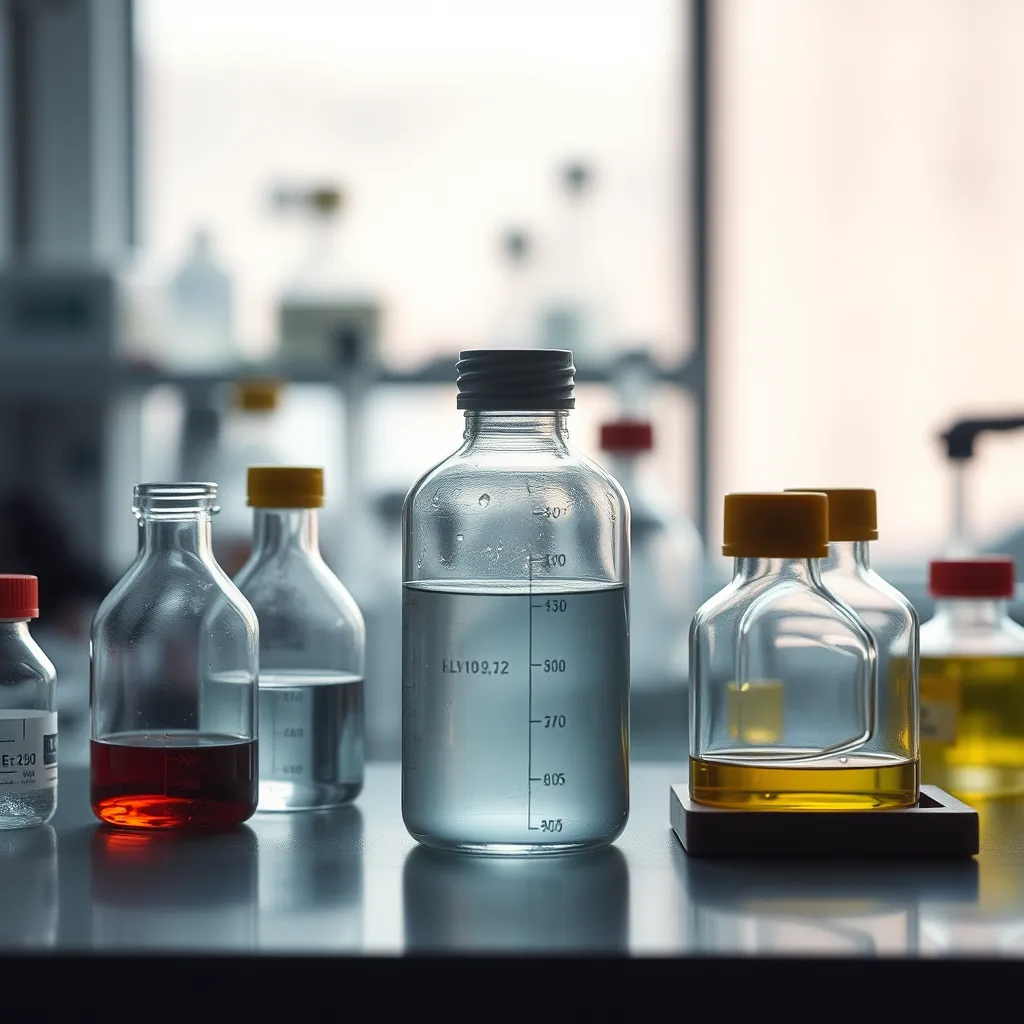Identify What You Don’t Recognise — With Certainty.
Whether it’s an unexpected residue, an unknown additive, or a mystery contaminant, our lab can identify unknown substances with precision. Using industry-standard techniques like GC-MS, LC-MS, and FTIR, we help clients get clear answers — fast — to make informed decisions.
Why It Matters
Unknown substances — even in trace amounts — can undermine product integrity, customer trust, and regulatory compliance. Whether it’s an unexpected residue, colour shift, or off-odour, timely identification allows you to act decisively. Labsure’s analysis doesn’t stop at detection — we help you understand the source, the impact, and the solution. This is essential not only for resolving current problems but also for preventing recurrence, improving internal processes, and safeguarding your brand.

From Suspicion to Certainty — Expert Analysis for Complex Unknowns
Unknown substances can pose risks to product safety, compliance, and performance. Labsure specialises in isolating and identifying trace components in complex matrices, supporting everything from regulatory reporting to quality control troubleshooting.
We help clients detect and understand a wide range of unknown substances across various industries and sample types, including but not limited to:
1. Foreign Particles or Residues
- Suspicious particles in creams, gels, or detergents
- Visible flakes or specks in coatings, adhesives, or inks
- Sediment formation in agrochemical emulsions
- Particulate contamination in rubber/plastic masterbatches
- Deposit buildup in water treatment or lubricant systems
2. Unknown Ingredients in Finished Products
- Undeclared surfactants or preservatives in personal care items
- Non-listed stabilisers or wetting agents in cleaning formulas
- Foreign plasticisers or co-solvents in adhesive formulations
- Additive packages in competitor or third-party samples
- Ingredient verification in OEM/private-label goods
3. Contaminants or Degradation Byproducts
- Oxidation products in oils, cosmetics, or agrochemicals
- Polymer breakdown compounds in plastics and coatings
- Odour-causing substances in perfumes, inks, or sealants
- Toxic byproducts under UV, heat, or pH stress conditions
- Hydrolysis residues in surfactant-based concentrates
4. Packaging Interaction Materials
- Plasticizer leaching from soft packaging films
- Unreacted monomers or adhesives from seals or tubes
- Colour migration from ink or label coatings
- Unexpected reactions with aluminum, PET, or HDPE containers
- Nanoparticle residues from coated barrier layers
5. Cross-Contamination During Production
- Cleaning agent residue in manufacturing lines
- Batch mixing errors leading to formula inconsistency
- Silicone or oil carryover in cosmetic/emulsion tanks
- Presence of prior-product traces in shared production lines
- Interaction of incompatible raw materials during scale-up
6. Other Identifiable Substances
- Environmental Contaminants – PFAS, phthalates, VOCs
- Metals or Ions – from corrosion, catalysts, or raw materials
- Microbiological Byproducts – microbial metabolites in spoilage cases
- Illicit/Restricted Substances – banned dyes, solvents, or allergens
- Unknown Actives – in competitor formulations or new samples
We work with clients across diverse sectors, where unknown substances may affect performance, safety, or compliance:
Cosmetics & Personal Care – lotions, emulsions, fragrances
Cleaning Products – surfactant-based & solvent-based formulas
Agrochemicals – crop protection, soil treatment, adjuvants
Paints & Coatings – decorative and industrial applications
Adhesives & Sealants – failure diagnosis, contaminant detection
Water Treatment Chemicals – scale inhibitors, coagulants
Surfactants & Blends – purity control, co-formulant tracking
Inks & Printing Materials – pigment settling, off-odour analysis
Plastics & Rubber – additive compatibility, migration issues
Packaging Materials – migration of unknowns into products
Industrial Lubricants & Coolants – degradation byproducts
Green Chemistry & Sustainability Projects – replace or detect legacy chemicals (e.g., PFAS, phthalates)
Analytical Techniques We Use
We employ a wide range of advanced analytical tools to identify unknown substances, quantify known ingredients, and support full-scale reverse engineering. Each technique is selected based on the sample type, expected components, and investigation purpose.
Gas Chromatography–Mass Spectrometry (GC-MS)
Applications:
Identifying volatile and semi-volatile organic compounds
Detecting fragrance components, solvents, hydrocarbons
Tracing unknown odour sources or impurities
Key technique in unknown residue or off-smell complaints
Used in cleaning agents, cosmetics, adhesives, and inks
GC-MS is widely used for detecting unknowns in complex mixtures and separating trace components in low concentrations.
Liquid Chromatography–Mass Spectrometry (LC-MS)
Applications:
Analysing non-volatile, polar or thermally unstable compounds
Quantifying preservatives, surfactants, actives, and degradation products
Crucial in profiling water-soluble additives, polymers, and agrochemicals
Often used in reverse engineering cosmetic, detergent, and formulation concentrates
Fourier Transform Infrared Spectroscopy (FTIR)
Applications:
Identifying functional groups and polymer types
Rapid fingerprinting of unknown solids, residues, and foreign particles
Comparing sample changes before/after processing or ageing
Commonly applied in plastics, rubbers, coatings, adhesives, and sealants
FTIR is fast, non-destructive, and perfect for identifying organic and some inorganic unknowns.
Nuclear Magnetic Resonance (NMR)
Applications:
Structural identification of organic compounds
Essential in characterising active ingredients in pharmaceuticals or high-purity samples
Supports component confirmation during formula deconstruction
Used for precise structural insight in cosmetic or research-grade samples
NMR is typically used for deep-level structural understanding, especially when GC/LC-MS results are inconclusive.
Microscopy + EDS (Energy Dispersive X-ray Spectroscopy)
Applications:
Identifying and visualising particles or foreign materials
Determining elemental composition of inclusions or sediments
Used in packaging failure, product contamination, or rubber/plastic residues
Useful for both visual evidence and pinpointing trace metal or mineral components.
Titration & Wet Chemistry Techniques
Applications:
pH, acid/base content, active material concentration
Surfactant activity levels or emulsifier capacity
Ideal for standardised QC testing and fast diagnostics
Supports formulation accuracy checks and reverse engineering base formulations
Stability & Compatibility Testing
Applications:
Testing how unknowns behave under stress (heat, UV, oxidation)
Useful in identifying degradation byproducts
Helps explain off-odours, sediment, viscosity changes or discolouration
Combined with other techniques to confirm root causes
ICP-OES / ICP-MS (Inductively Coupled Plasma) (if available)
Applications:
Detection of trace metals, heavy elements, and ionic contamination
Common in water treatment, pigment, rubber, and agrochemical testing
Especially important for compliance with global safety standards (e.g. RoHS, REACH)
